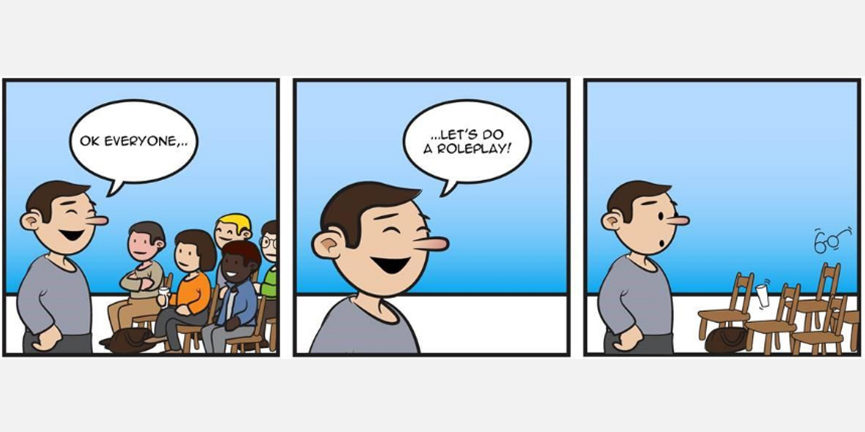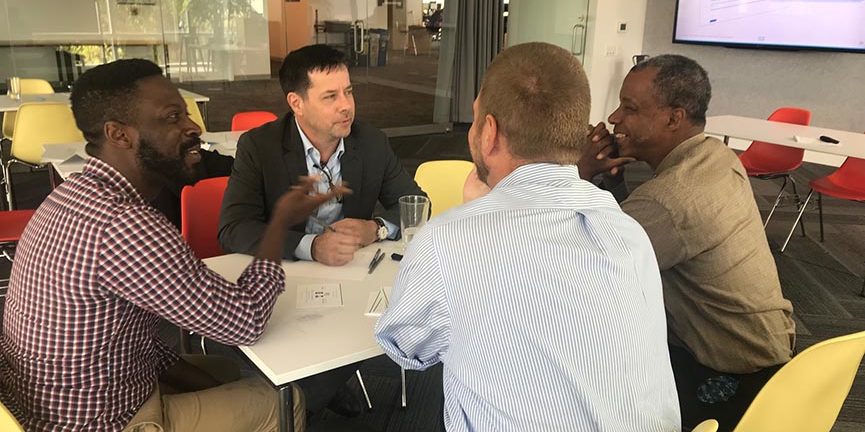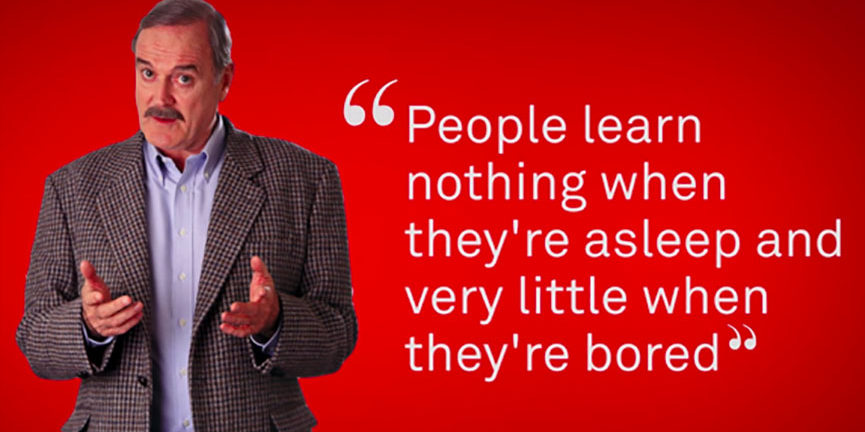
Add Impact to your Corporate Trainings with Roleplay Actors
No wonder modern L&D professionals are asking for corporate role play actors to add impact to soft skills training and get a competitive edge. Most training is theoretical and doesn’t stick! Companies that deploy professional actors for corporate role play in assessment and development courses claim that the benefits are huge. Role play actors can […]
Read More
Prevent the ‘Great Resignation’ at Your Company
On average, 4 million Americans are quitting their jobs each month in 2022! This trend is not limited to the United States alone. The pandemic, remote work and self-reflection led people to re-evaluate their priorities at work, and their life as a whole. The Microsoft Work Trend Index shows that more than 40% are considering […]
Read More
Why “Play” is Important in Business
Play is possibly the most potent tool used by educators. Can role play be a useful tool in workplace training? Yes! Not the traditional: get two people to sit opposite each other and pretend to be in a situation while everyone one else watches (a sure way to kill off any sense of playfulness).
Read More
Corporate Role Play Exercises
Have you wondered how to gain greater impact when communicating? Simply changing what you do with your body can help you experience different feelings. This goes against what most people think about cause and effect in human communication. Discover how role play exercises could give you more impact.
Read More
Role Play in Business – Why it Doesn’t Really Suck
Role play is possibly one of the most controversial methods used in business training. So why should you even bother trying role play as a business training method? Anything we do well in life has come from practicing it, and that’s where role play becomes a powerful teaching tool.
Read More
The Value of Non Verbal, Human Communication Skills
Albert Mehrabian is an American Psychologist known for his work on verbal and nonverbal communication. In 1967, he published 2 studies dealing with positive and negative emotions experienced via 3 channels of human communication. What he discovered still causes controversy.
Read More
High Status and Low Status, Body Language and Conflict Resolution in the Workforce
Status is an instinctive form of body language. It is fundamentally a defense mechanism. When you play high status, you are sending out the message, “don’t mess with me because I bite”. When you play low status, you are sending out the message, “don’t mess with me because I’m really not worth the effort.”
Read More
Overcoming the Fear of Public Speaking
Public speaking or jumping out of a plane… which would you prefer to do? Given a choice, there are a lot of people out there who’d rather jump out of a plane (some of those without a parachute) than speak in front of others. Here are 4 tips to help you overcome your fear of public speaking.
Read More
Virtual Sessions Are Effective and Germ Free!
The world has gone a little crazy during the outbreak of COVID19, with toilet paper panic buying, unstable stock markets, seminars being cancelled, and the world economy taking a hit. As a result, we are advised to stay at home. That’s only a temporary solution.
Read More
A Better Feedback Conversation – How to Give and Take it
George Bernard Shaw once said that “The single biggest problem with communication is the illusion that it has taken place.” So what can we do to make sure the feedback conversations we have are meaningful and positive? Here are three tips.
Read More
What’s So Funny About Corporate Training?
The advantage of using corporate actors to deliver interpersonal, communication, and presentation business training is their hands on nature. Discover which soft skills actors learn as part of their trade that translate perfectly into humorous, interactive training.
Read MoreBuilding Rapport
Everyone is busy at work, getting results, getting s**t done, right? So how do we build rapport and earn trust from the people we interact with at work? And how do we know when we have it? Here are some tips for improving working relationships.
Read More
